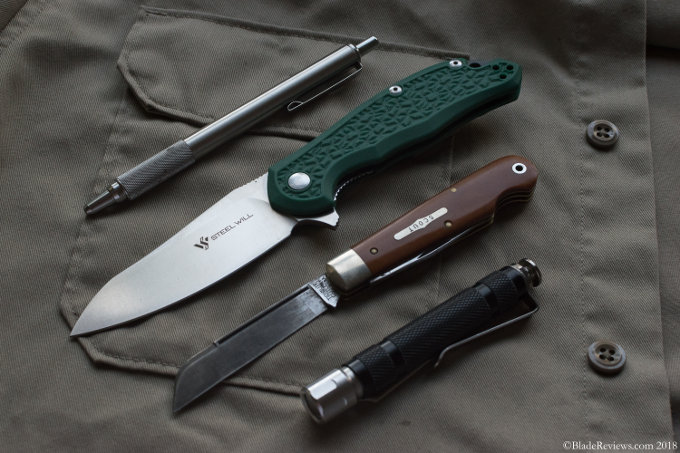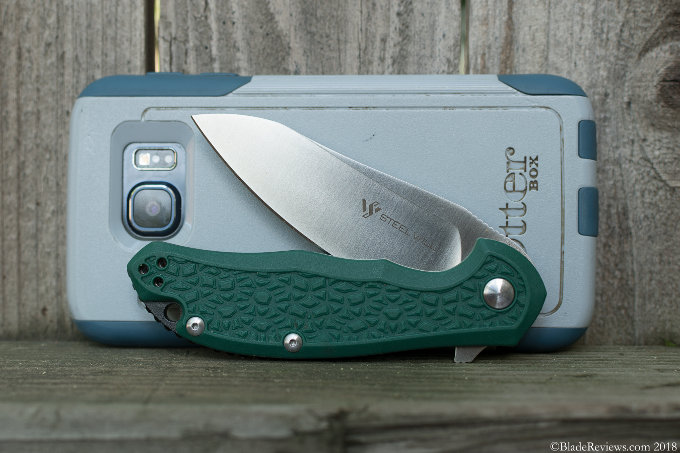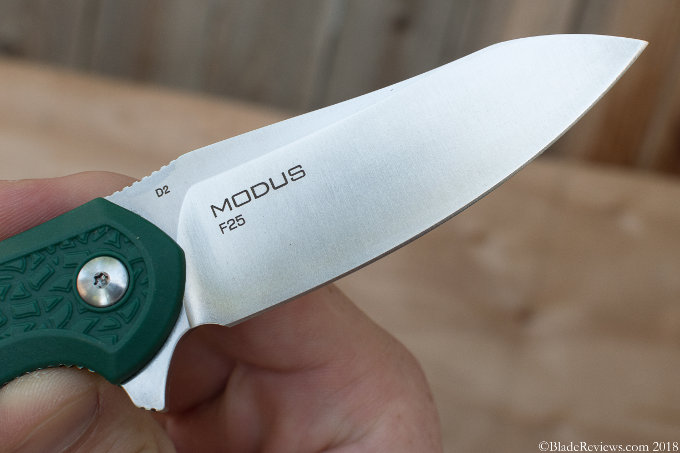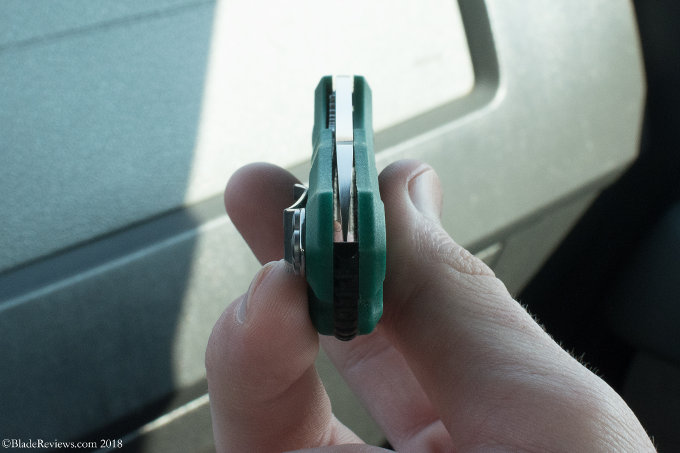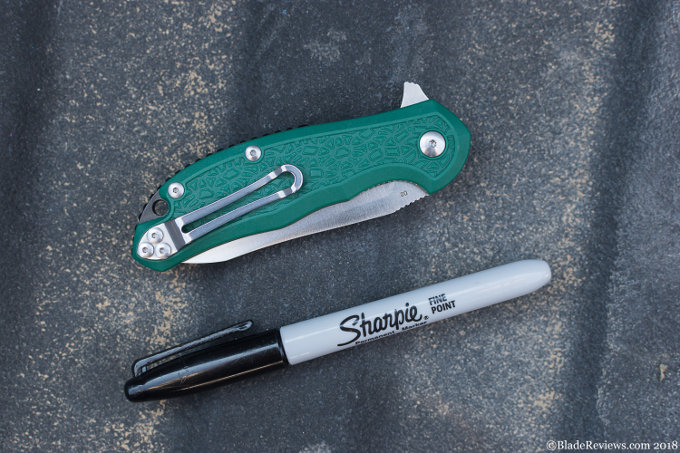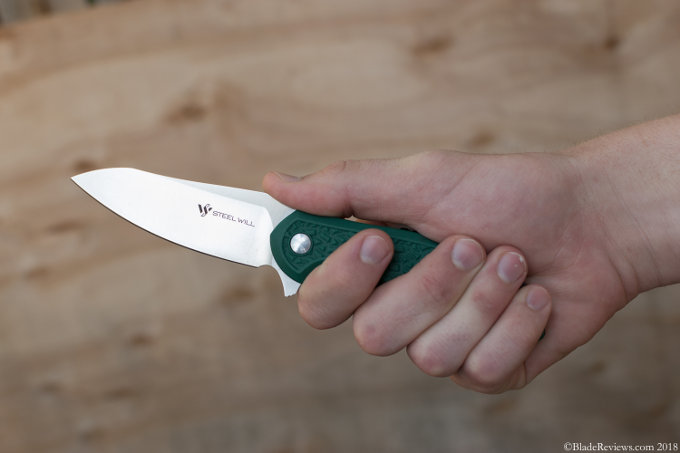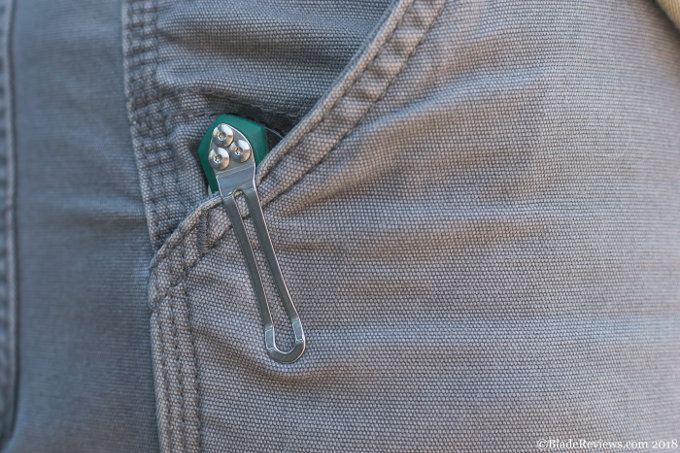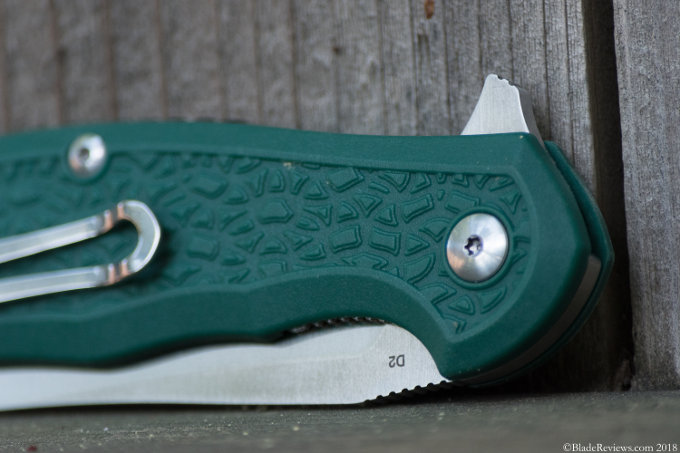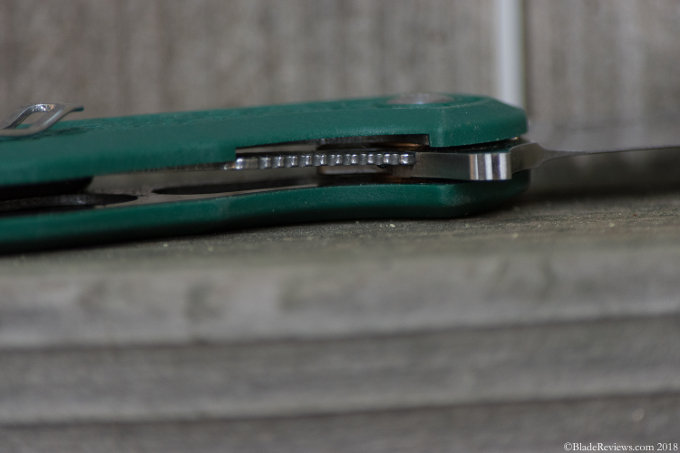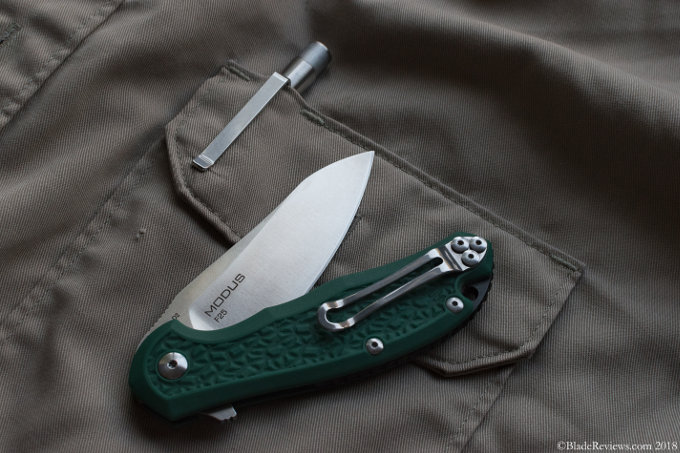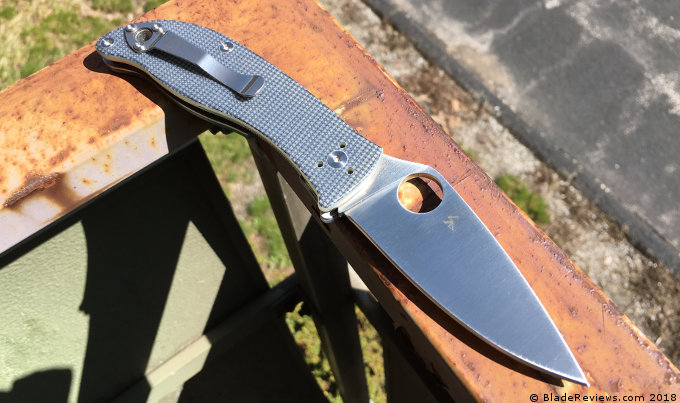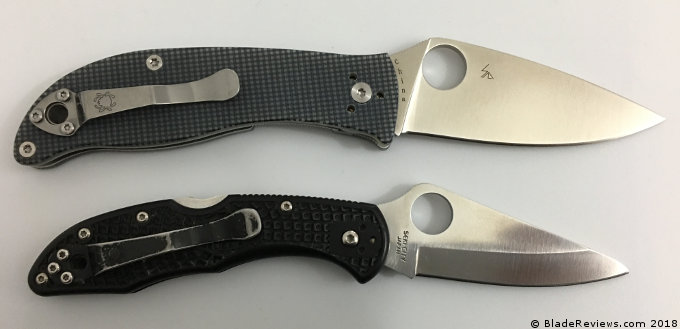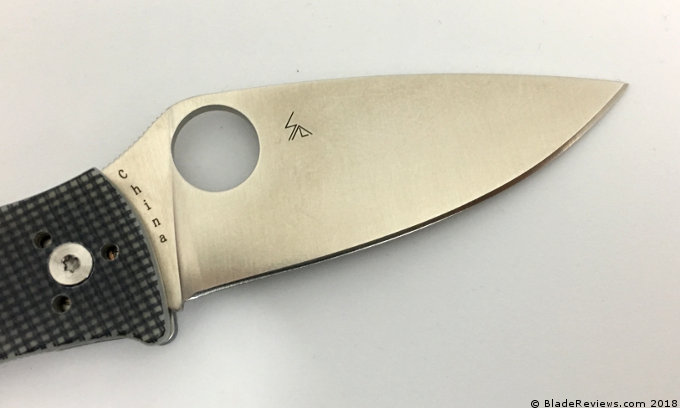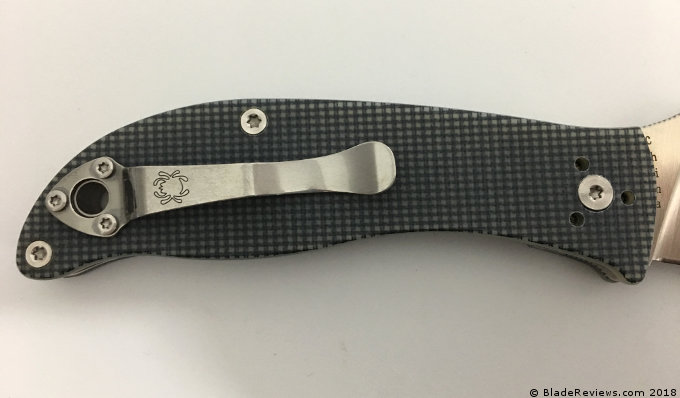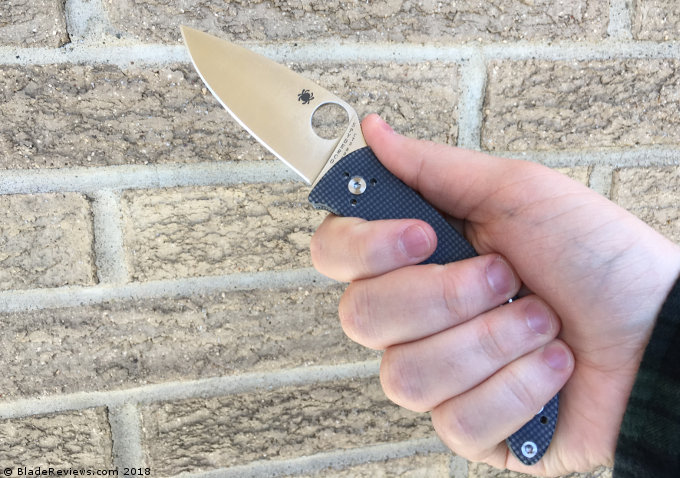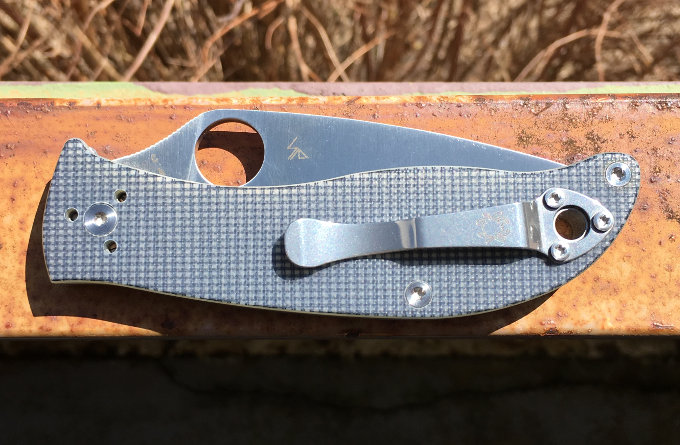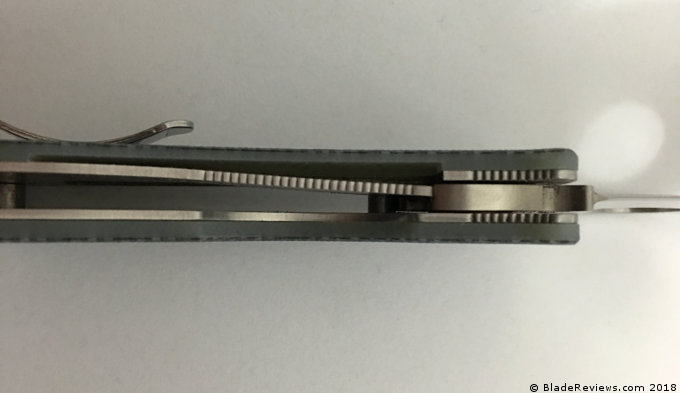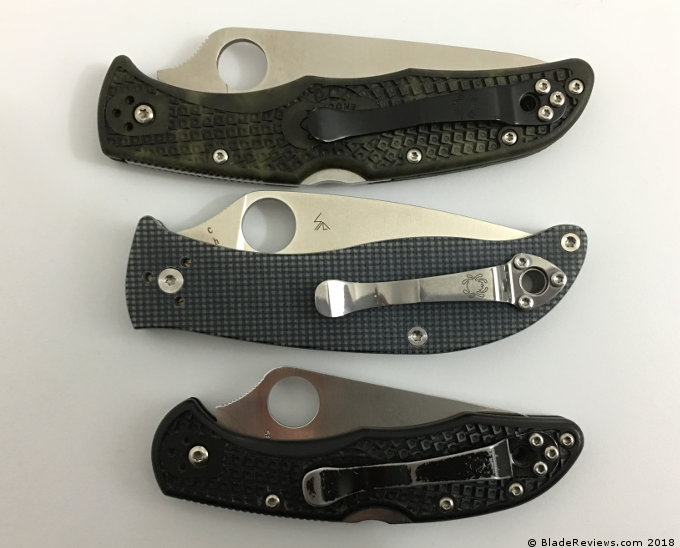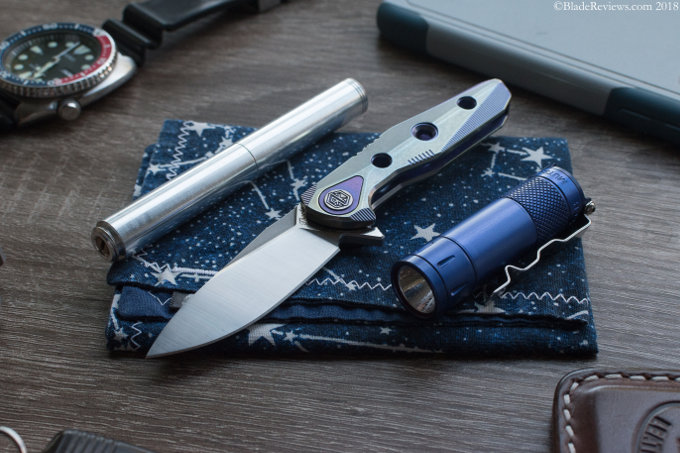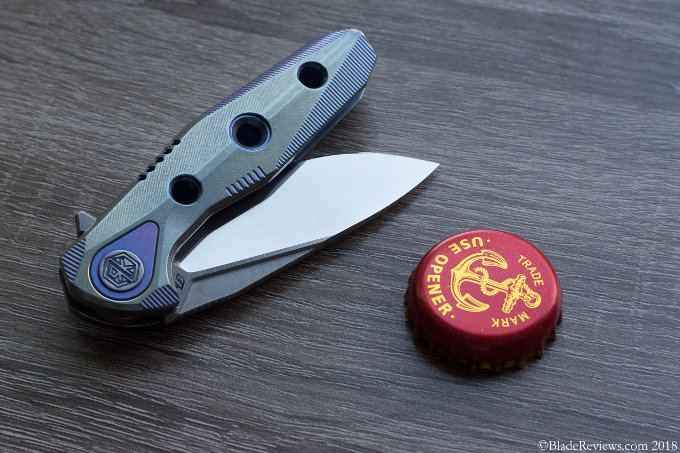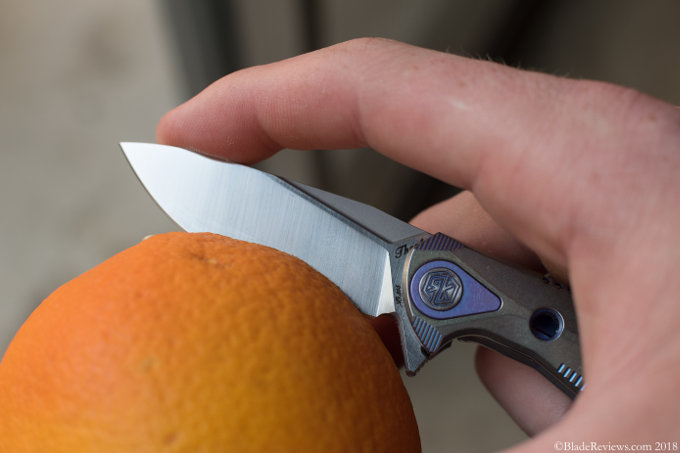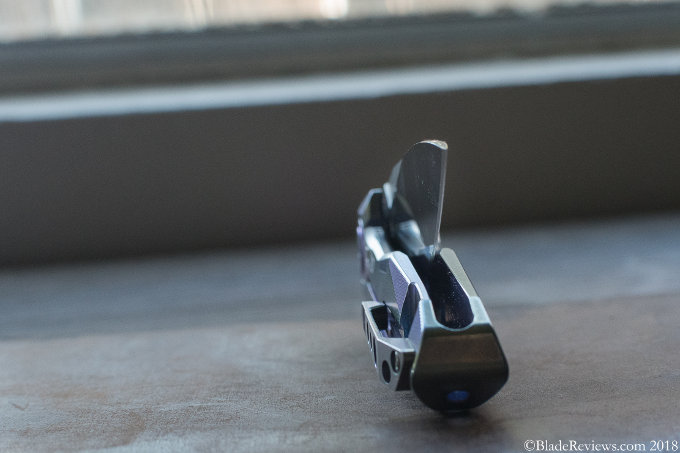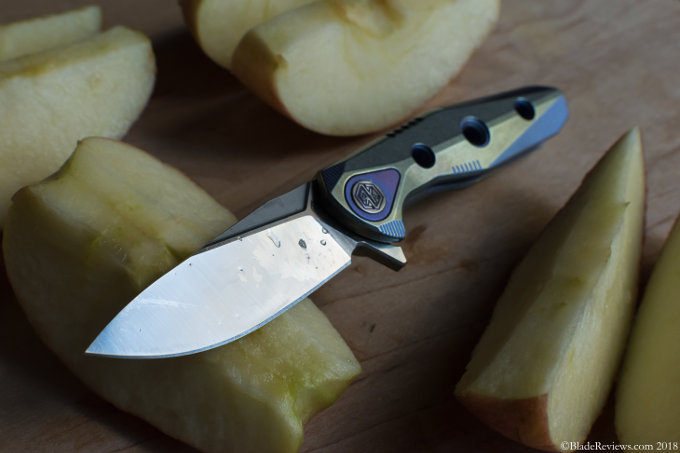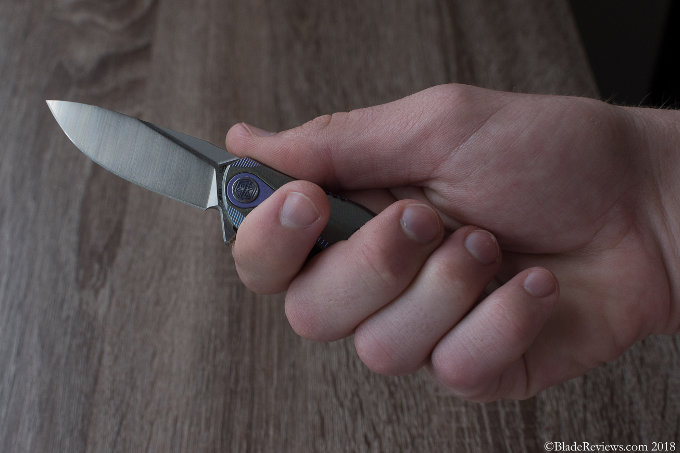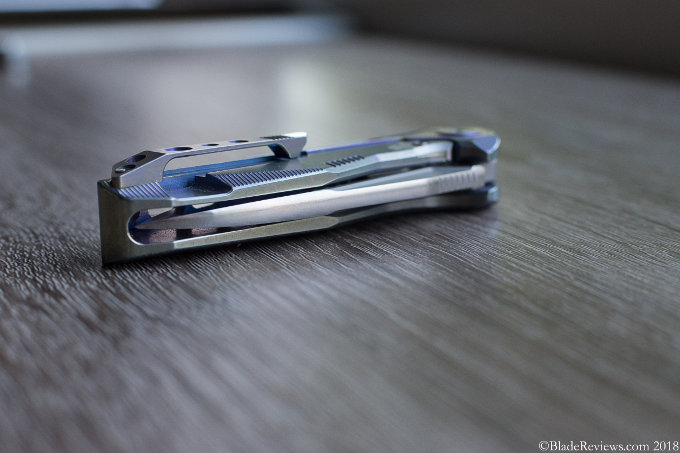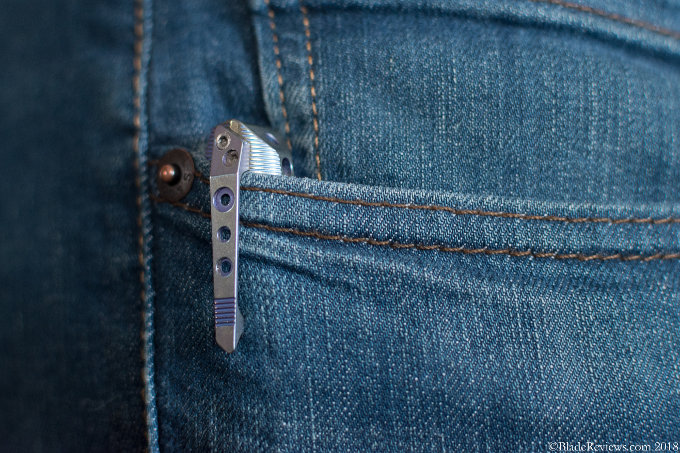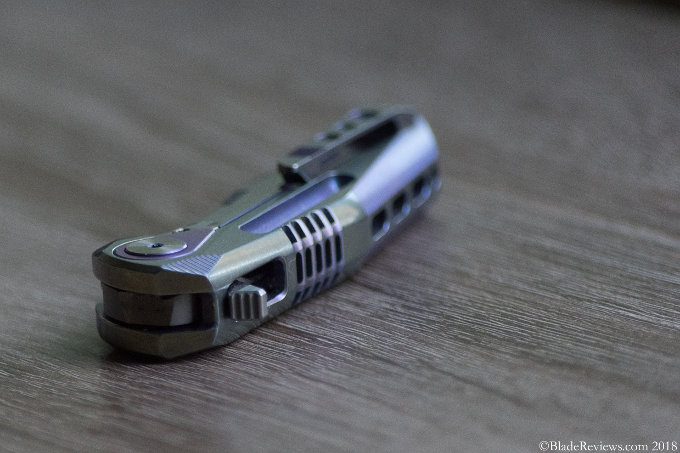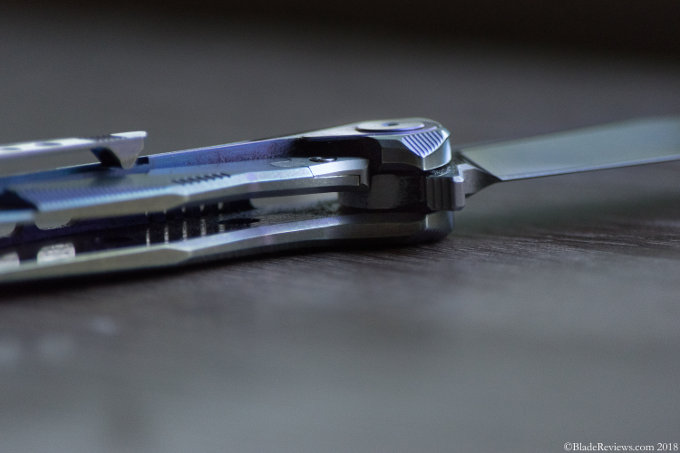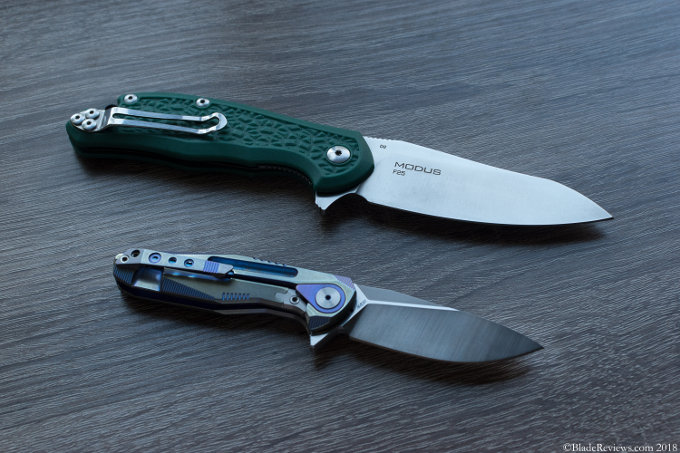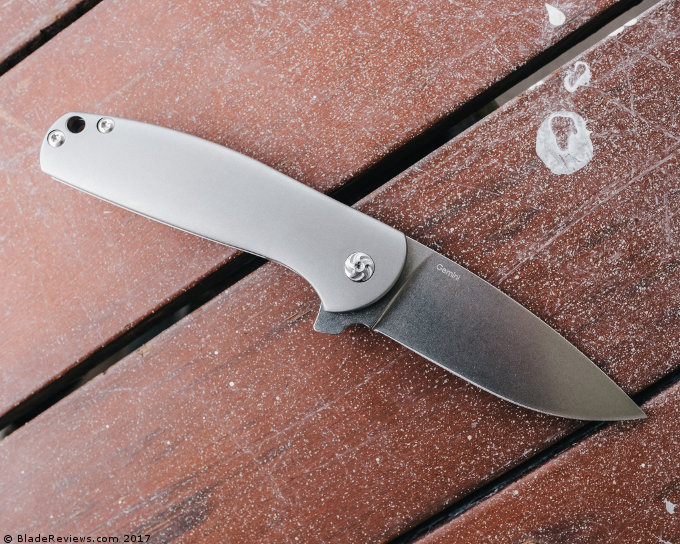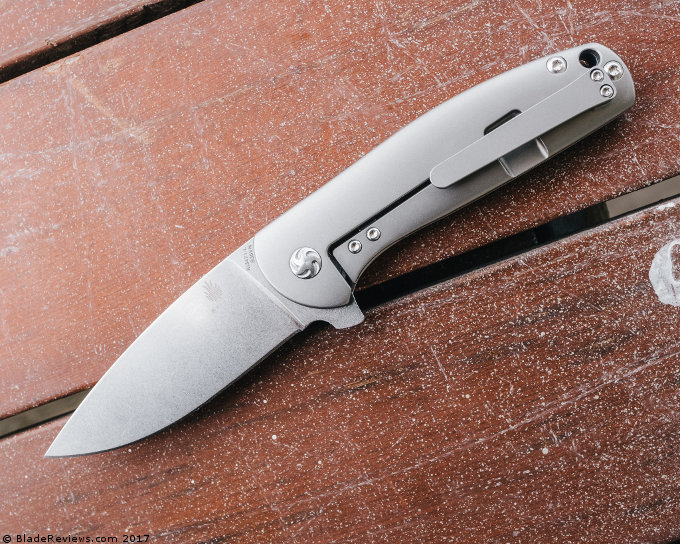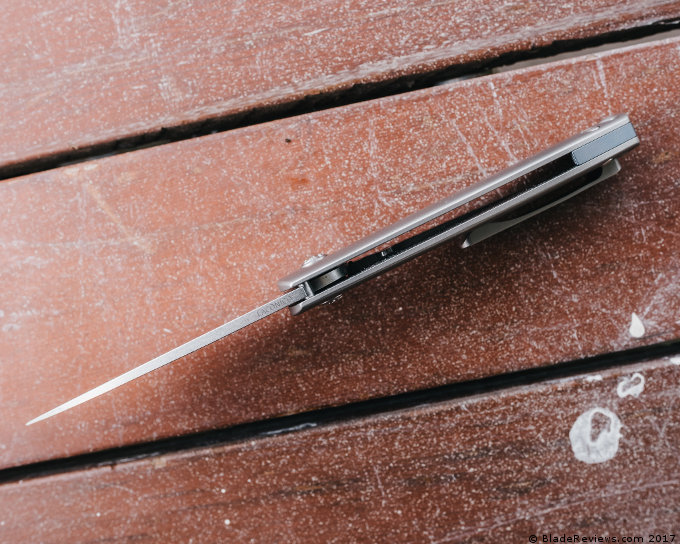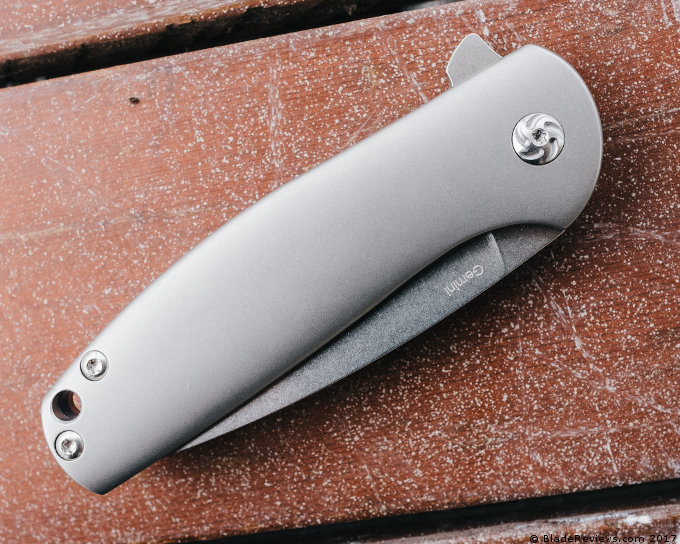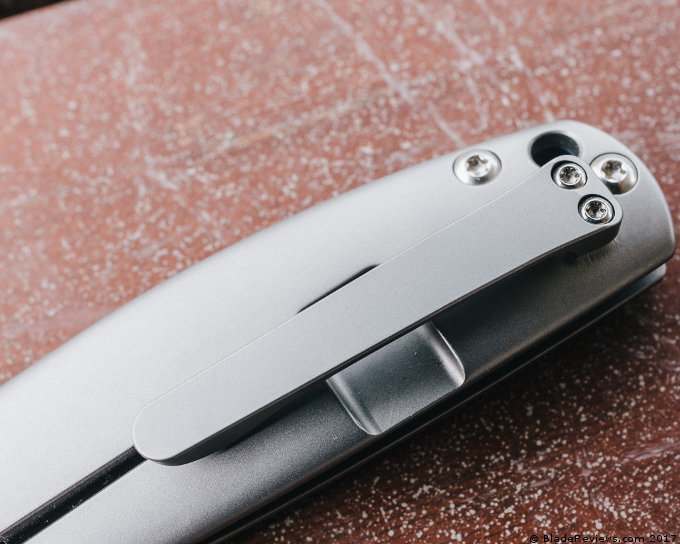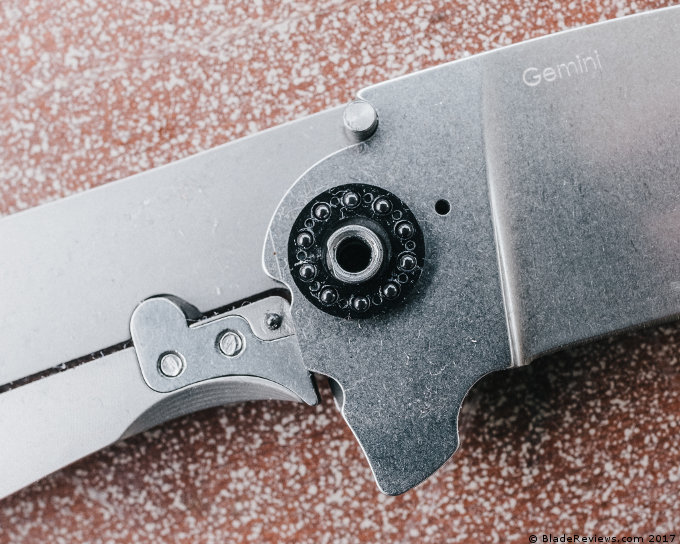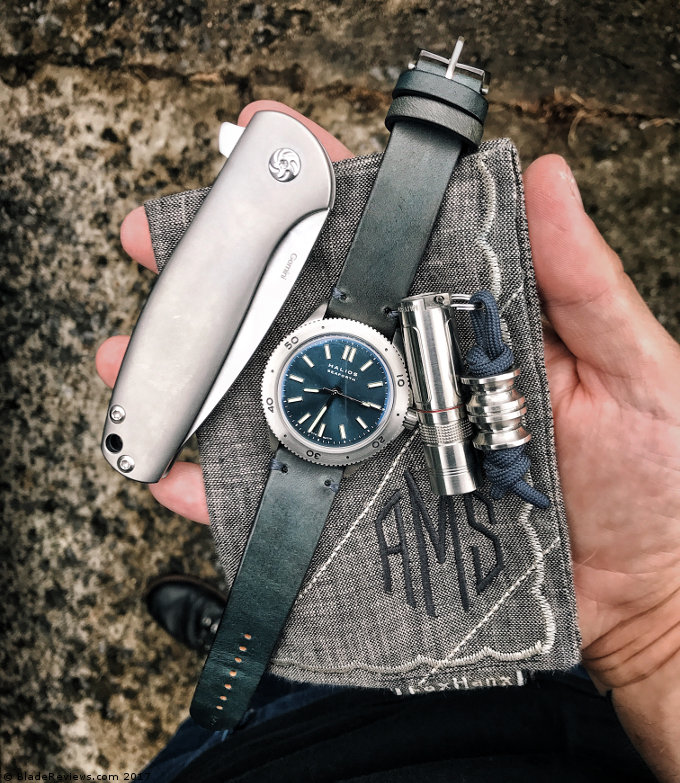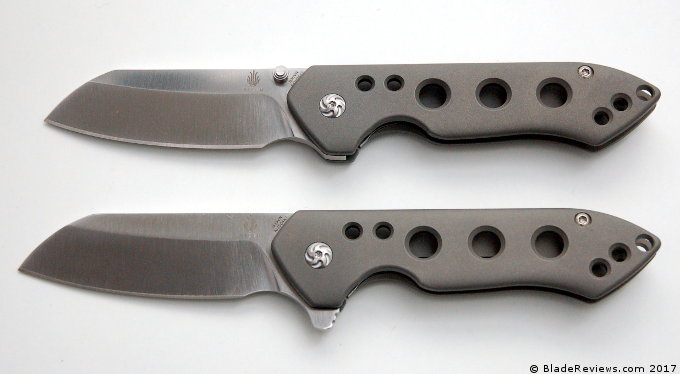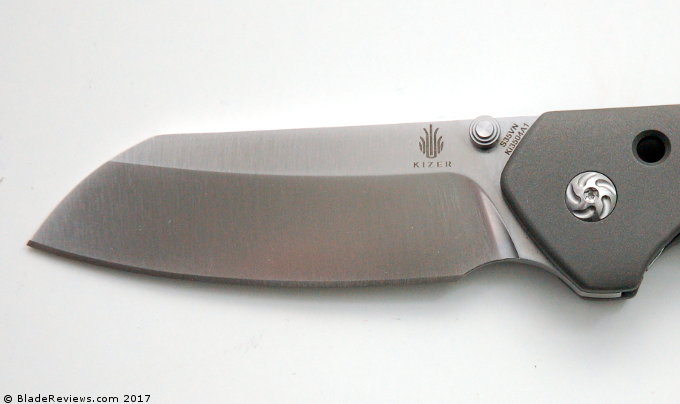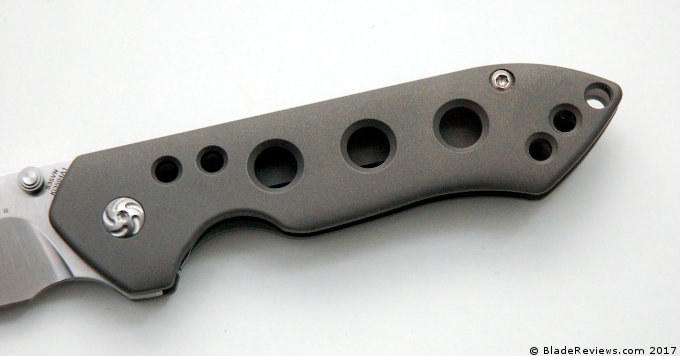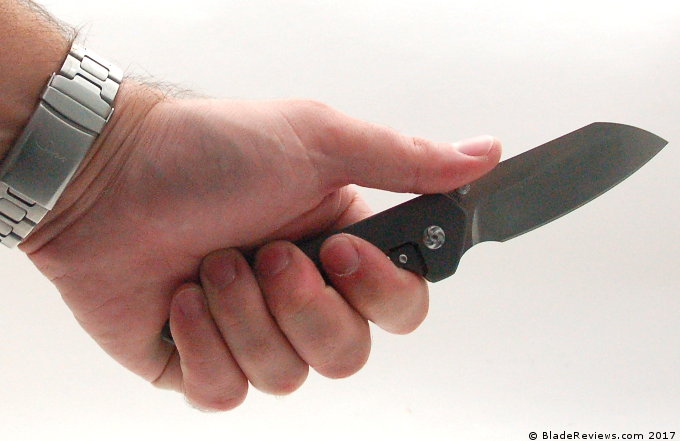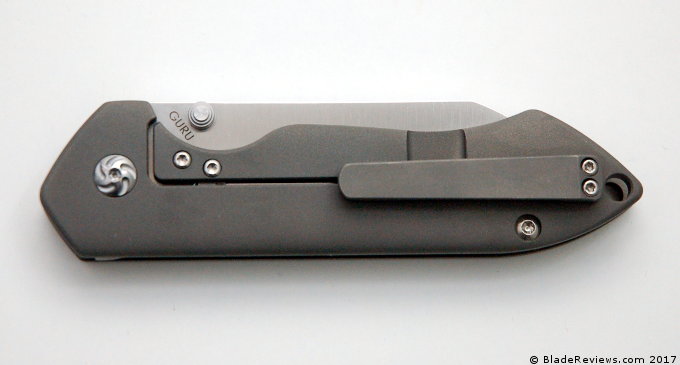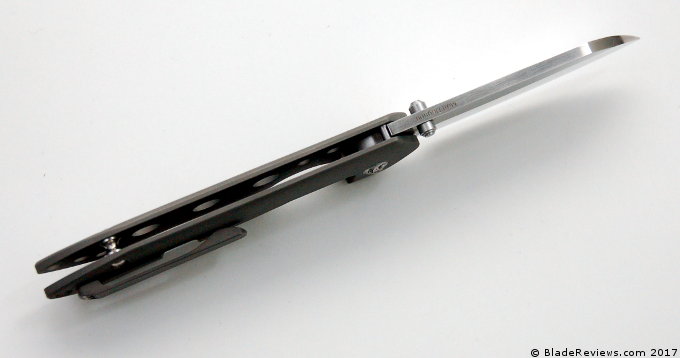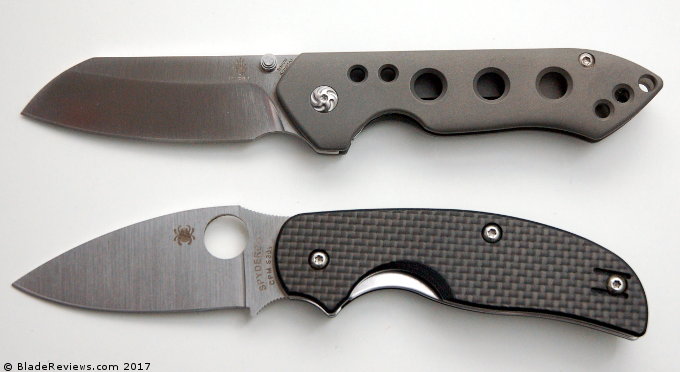For 2014 KAI USA and Emerson Knives have teamed up to deliver the first high volume, overseas produced Emerson designed ‘CQC’ knives. The release targets a thirsty market of consumers looking for the designer’s distinct ‘tactical’ aesthetic coupled with the wave opening feature at an affordable price point.
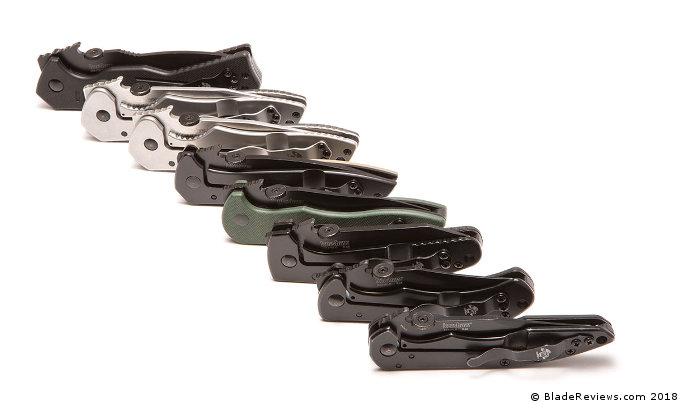
Buy the Kershaw Emerson Collaboration at Amazon
The CQC in the name stands for Close Quarter Combat suggesting a professional application amongst LEOs, Military Personnel, First Responders etc. They are also commonly sold as a self defence products. Regardless of the implied market I think that these will be popular with the EDC crowd and collectors who are fans of the category.
A total of eight 2014 models fall under the Kershaw brand. There will also be two knives positioned in the higher end market, the 0620 and 0620CF. These premium versions have their own designs and will be released with Zero Tolerance which is also a KAI property. The topic of this review will be the Kershaw models : CQC 1K through to the CQC 8K. They are roughly designated their model number (1-8) by overall dimensions (length, width, weight) and cost. They can also be visually differentiated by lock type, handle construction, blade style and finishes.
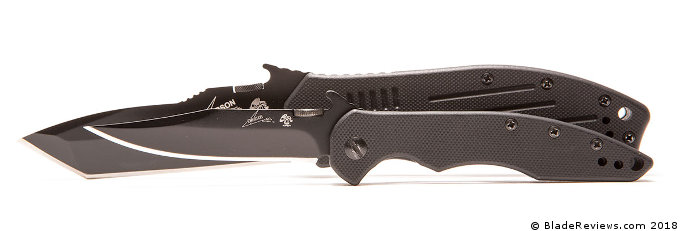
General Dimensions and Blade Details
The 1K, 2K and 3K models are quite small and range from 6.35” in overall length to 7.45”. The 4K and 5K’s are slightly larger in over-all dimensions and weight, but not quite as large as the designer’s standard line. The 6K, 7K and 8K will probably be the models that people will find the most like Emerson’s typical offerings. These are near to the size of the Mini-Commander or CQC 7’s, ranging from 7.75” to 8.1”. The Roadhouse that is being used as a comparison is an inch bigger than the largest Kershaw coming in at 9.1” in Overall Length.
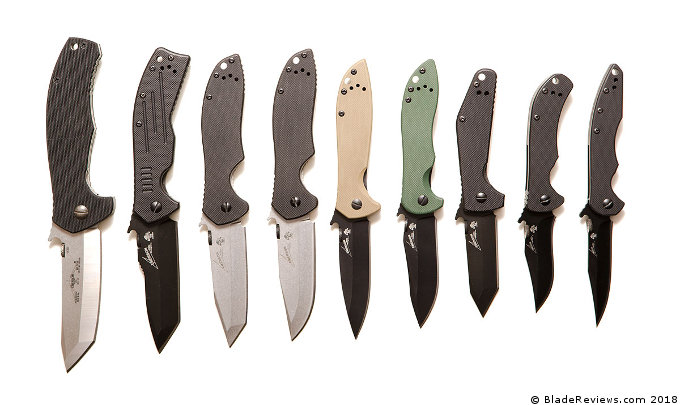
All of the blades are made from the steel 8Cr13Mov. This is a stainless that has both reasonable edge retention and corrosion resistance for the price point. If you are looking for added corrosion resistance the black oxide models would be a better choice than the stone-washed editions. That said, I much prefer the aesthetics and well wearing surface of a stone-washed blade. The stone-wash covers the entire surface (not just the flats) and is a little less defined than a US made Emerson but it still looks good.
Patterns range from three tantos (CQC-3K,CQC-7K, and CQC-8K to four modified clip points (CQC-1K, CQC-2K, CQC-5K and CQC-6K) to one drop point (CQC-4K).
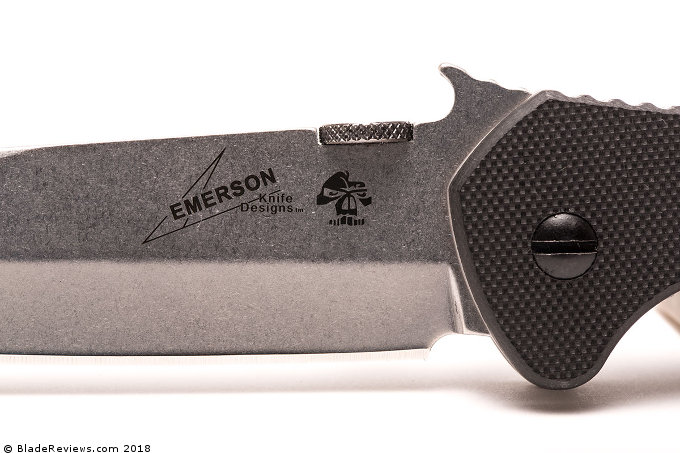
A flat grind produces a durable yet keen edge. Each has a standard V grind and edge bevel with the exception of the 8K where a chisel grind has been utilized. While all eight knives come sharp, the thicker stock favors strength over delicate slicing, typical of this genre. To make another comparison, Emerson uses a .125” (3.14mm) blade stock. The Kershaws are slightly thinner at 0.113” (2.9 mm). A model number and the manufacturer logo is etched on one side of the blade and a modified Emerson logo and skull appear on the other. Skulls aren’t for everyone but it’s pretty small. If you’re into skulls, you’ll be happy to know there’s one on the clip too.
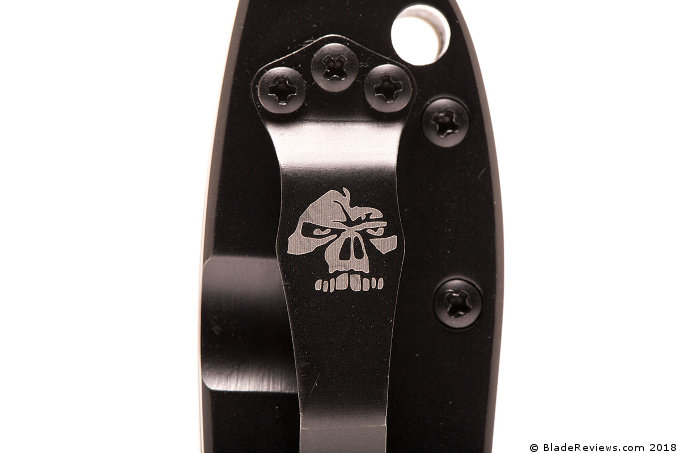
Handle and Ergonomics
The handles are a partially closed back construction that uses an injection molded back-spacer. Since some models are liner locks and others frame-locks, finishes vary. All models have a grip thickness of .4 to .5” making them feel stout in hand and present in pocket. The CQC 4K and 5K are the only two with colored scales, all the rest have black G10 with black-coated frame or liner locks. The stone washed editions have bead blasted 410 stainless frame locks. The CQC 8 scales have some milled in surface detailing.
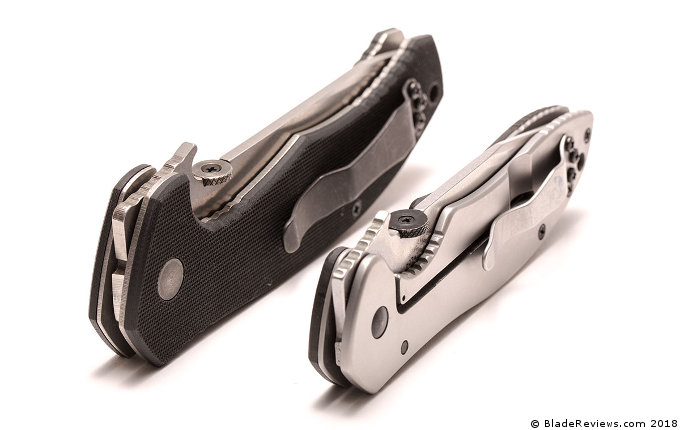
The G10 texture is less aggressive than the standard Emerson peel-ply stock. Some people may criticize this and others will appreciate the lack of pocket wear. I fall into the latter. The stainless frame-lock editions don’t have any texture so there will be little to no pocket wear. Addressing the pocket clips, it’s important to note that they are all tip up and unlike stock Emerson’s, reversible for ambidextrous carry. Retention is great and works well with the wave.
The ergonomics are varied throughout the line. The smaller editions feel a bit small in my hands with their 3 finger grip. The 1K and 3K’s straighter handles feels more comfortable since there’s less of a curve on the inner edge toward the pommel. All of the models above the 3K feel great to me with the exception of the 8K which has some pretty specific lines. That’s not to say it won’t fit like a glove for some, but I would suggest holding it in person first if possible.

Once again I feel that the 6K and 7K’s hit a sweet spot. The deep finger groove adds excellent retention and the rest of the handle’s contouring nests comfortably in hand. The jimping on all models is fairly smooth yet still provides some feedback and traction in use. On all the models, the wave also doubles as a thumb ramp for finer control.
Deployment and Lockup
For deployment all models have both a knurled thumb-disc and the patented “Wave”. The Waves are, as far as I can tell, all the same size. Being familiar with the technique, I haven’t had a problem repeatedly and reliably opening the knives this way.
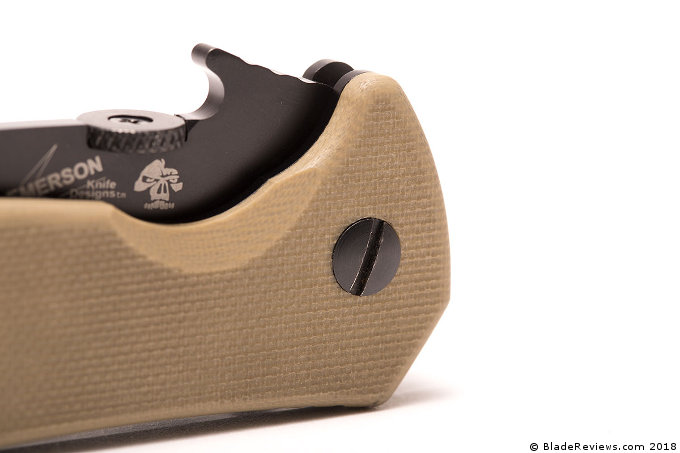
While most people who read this site know what the wave is, I’ll dial it back and briefly explain. The wave opening feature consists of a protrusion on the blade’s spine. When drawing the knife from a closed and clipped-on position, it catches on the rear seam of your pocket. With a quick up and backward movement the blade opens without additional manipulation. Because it all happens at the same time you produce the knife, it’s the fastest way to open a folder. This has made the wave a popular option on back-up or self defense knives as it combines easy carry with very fast deployment.
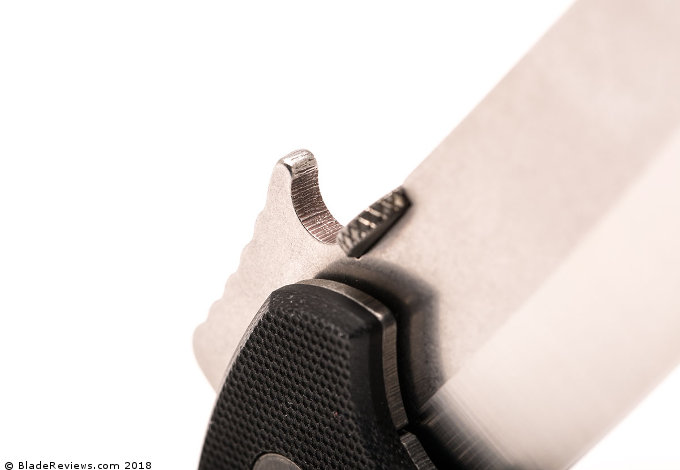
On the down side ‘waving’ a knife will undoubtedly be seen as an aggressive act if you’re doing it at the office. You’ll probably want to use the thumb-disc which allows you to deploy your CQC without the attention in those situations.
When open both liner and frame locks are solid and without play. Lock-up contacts close to, or at 100% of the lock face. I think that this is a good move. When opening with the wave is important to have a full and audible engagement for safety.
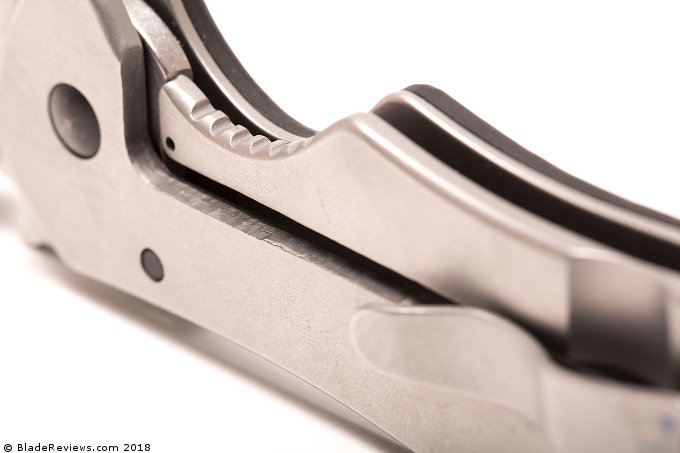
The fasteners used for construction are standard flat heads for the pivot and Phillips heads for the rest. This is great for easy adjustment when necessary. Any standard multi-tool or typical at hand screwdrivers will do.
Over-all the fit and finish of the knives is quite good. Some may be surprised that there are some areas where the Kershaw models are more resolved than their higher end counterparts. On the originals there is often rough tooling around the perimeter of the handles, liners and blade edges. The Kershaw models are quite clean. Blade centering on all eight of the knives received for review was spot on. Below are a couple of details that show differences in the fit and finish.
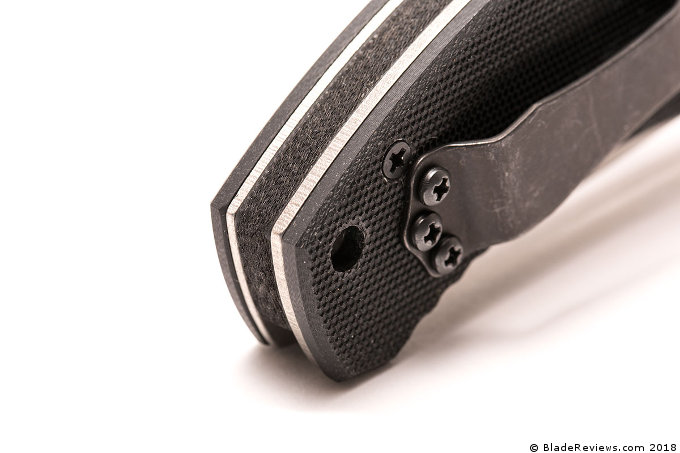
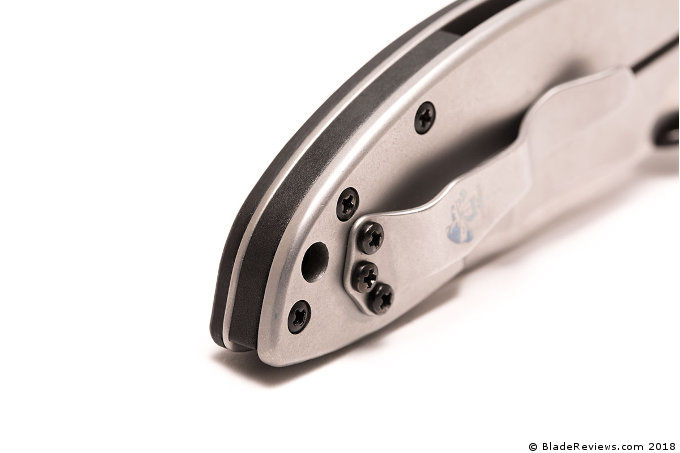
Kershaw Emerson Collaboration Review – Final Thoughts
All in, Kershaw did an excellent job bringing these designs to market. With all of the differences in sizes, shapes and finishes there should be something here for everyone. Releasing eight new models from one designer is a pretty bold statement but one that will likely be backed by excellent sales.
Personally I like the 4K through to the 7K, their ergonomics felt the most comfortable. The 6K and 7K stone-wash looks the slickest in my opinion. Personal taste aside, these are 30 to 40 dollar knives. About a quarter to a fifth of the price of a US made Emerson.
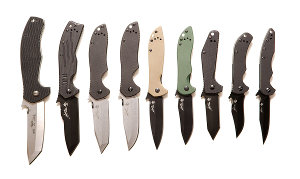
Kershaw Emerson Collaboration
From: BladeHQ
Editor: I recommend purchasing the Kershaw / Emerson collabs at Amazon. Please consider that buying anything through any of the links on this website helps support BladeReviews.com, and keeps the site going. As always, any and all support is greatly appreciated. Thank you very much.
Photo Credits: Andrew Gene
